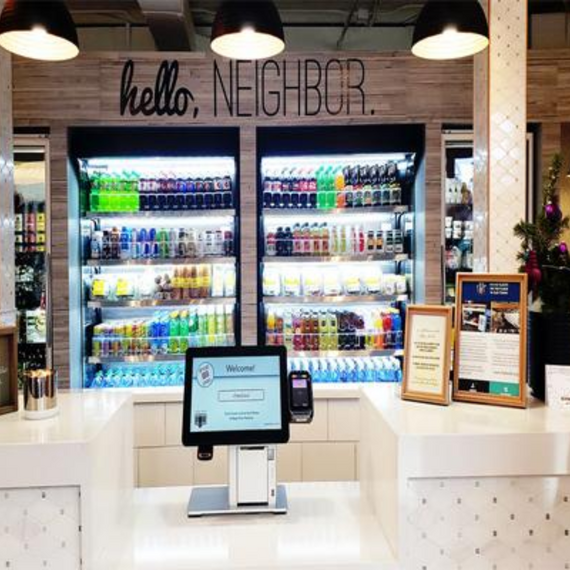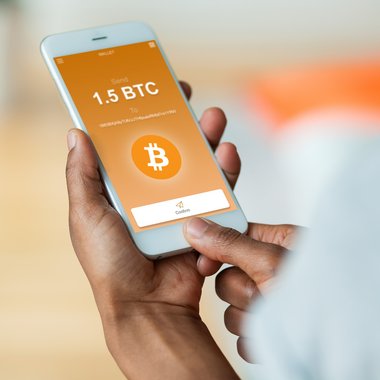
- Five minutes read
The future for crypto at the checkout
Major changes are taking place in the digital currency marketplace. The total number of cryptocurrency owners almost tripled in 2021, from 106 million to 295 million, and a recent report from Crypto.com predicted that number could reach one billion by the end of 2022.
This increased consumer interest, coupled with regulatory evolution, has already seen conventional finance companies, and payment networks, move into the cryptocurrency space. Convergence between ‘crypto first’ and fiat-based financial services is accelerating. This convergence is crucial to the wider acceptance of cryptocurrencies, which should, in turn, open up new ways for businesses to serve their customers and fresh choices for consumers over how they pay.
Cryptocurrency at the checkout
For years, crypto evangelists have been waiting for more real-world use cases for decentralised currencies. A report we launched in January 2022, ‘Going inside the crypto community’, found that 33% of crypto owners already say crypto is the future of payments, and 21% claim that in the future they want to make all their payments using crypto.
We have seen the emergence of a new group of consumers who are “crypto rich and fiat poor” – people with large balances of cryptocurrency with few ways to convert to fiat without paying high fees. That fee hurdle and consumer reluctance to spend crypto is changing though, and a large part of cryptocurrency development in the near future will be devoted to future-proofing blockchains to meet consumer demand.
Interest in crypto as an option at the checkout is gaining traction among businesses too. According to Paysafe’s independent research released in December 2021, nearly half (48%) of businesses say they are committed to accepting crypto payments in their online checkout as quickly as possible, and 53% say they either already accept crypto payments or plan to offer crypto payment options in their online checkout in the next year. Luxury fashion label Off White, for example, began accepting cryptocurrency payments in April 2022, across its flagship stores in Paris, Milan and London.
To accept crypto payments, businesses need the process to be significantly simplified. They shouldn’t have to worry about crypto currency fluctuations, deciding which crypto currency to accept and how to convert to fiat - all of that should be handled by their payment provider.
Furthermore, any integration needs to be led by solving customer pain points rather than simply trying to find use cases for new technology. This has been an issue with crypto and blockchain use cases in the past, but now we are starting to see the technology genuinely being used to solve the issues of today’s consumers.
Cryptocurrencies must become quick to confirm payment, cheap to transfer and reliable. When compared to mainstream consumer payment methods some cryptocurrencies demonstrate multiple issues which could create a headache at the checkout. The most popular cryptocurrencies (e.g. Bitcoin, Ethereum) can bring price volatility, high transaction fees and long transaction confirmation times – often around ten minutes - all factors which limit acceptability for businesses and consumers.
The evolution of ‘layer two’ technologies for Bitcoin and Ethereum promises, in the future, to bring greater speed and lower transaction costs to these major players, but price volatility will remain a huge challenge.
The case for Stablecoins
Stablecoins on the other hand, have seen considerable growth in acceptance. They are designed to have a constant price and are typically 1:1 backed with a specific fiat currency like the U.S dollar. It is this guaranteed exchange rate with a “real” currency, often partnered with quicker transaction times and lower costs, which place stablecoins front of the queue for wider acceptance.
Regulated correctly to protect consumers and businesses, and by keeping payments as simple as possible due to their fundamental design, stablecoins could be transformative. For a business, accepting quality stablecoins as a first step into cryptocurrencies would present the lowest risk while still offering an additional way for customers to pay; opening the business up to a new consumer segment and positioning the business as being innovative. Stablecoins also have the potential to simplify international payments and enable the automation of transactions with certainty over payment being received.
There is still the need to simplify the crypto payment processes to offer a seamless experience for consumers, but work on addressing these challenges is well advanced. The latest generations of digital wallets, which support both fiat and crypto currencies offer familiar interfaces for anyone who has used digital banking. The outlook for what can be achieved is an exciting one.
What next for merchants?
The growth of cryptocurrencies has been one of the dominant narratives defining the past 12 months in payments. For the foreseeable future, there is no doubt that fiat currency will dominate. However, it is likely we will increasingly see electronic fiat payments work in parallel with cryptocurrency, and mainstream payment systems evolve to take advantage of the technologies underpinning cryptocurrencies. Long term, reports indicate we should see more radical growth for crypto.
Businesses thinking about introducing cryptocurrency payments to the checkout should first listen to their customers’ needs. What are customers really looking for when making a digital currency payment? What pain points can be fixed? The benefits of solving these pain points will not only leave the business with satisfied customers. They should also be set up for streamlining processes, easier international payments and ultimately the opportunity to tap into a bank of crypto-enthusiasts looking to spend some of their investment gains.
This article was originally published on Retail & Leisure International here.




